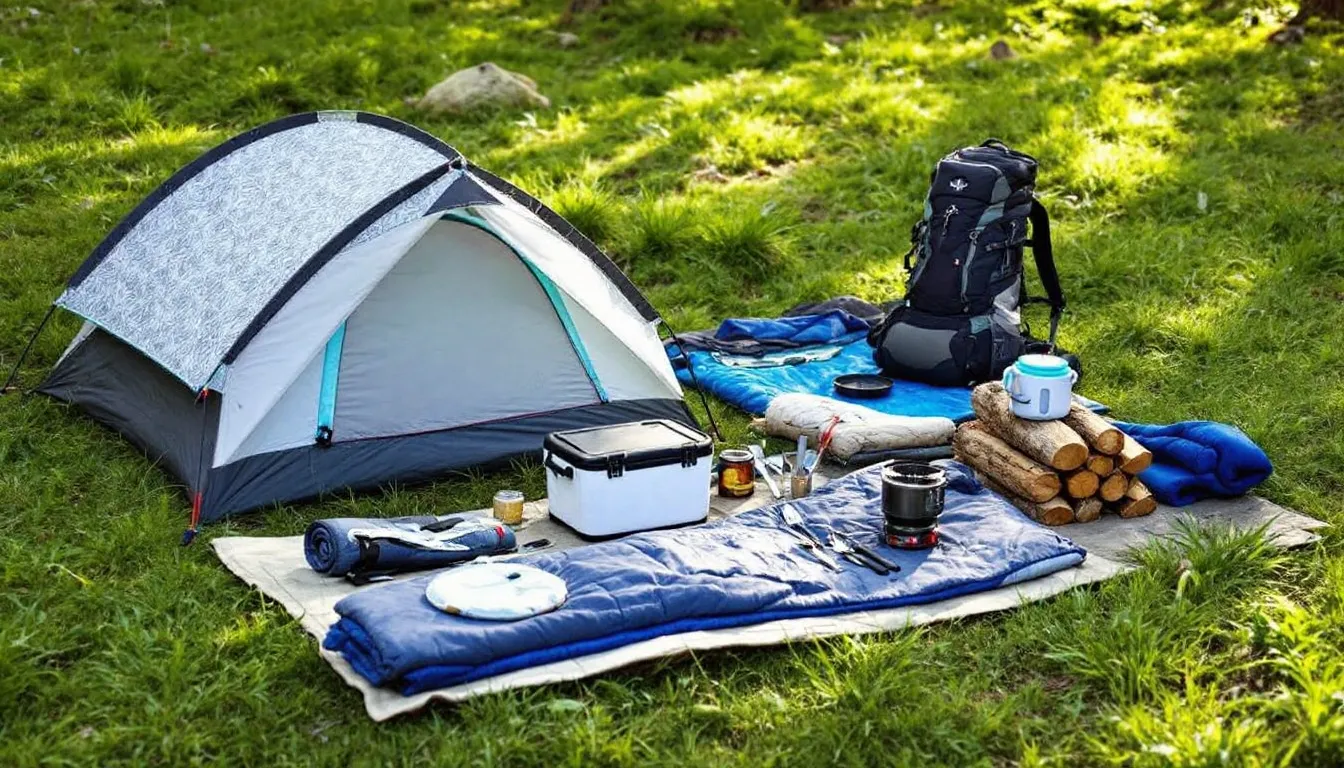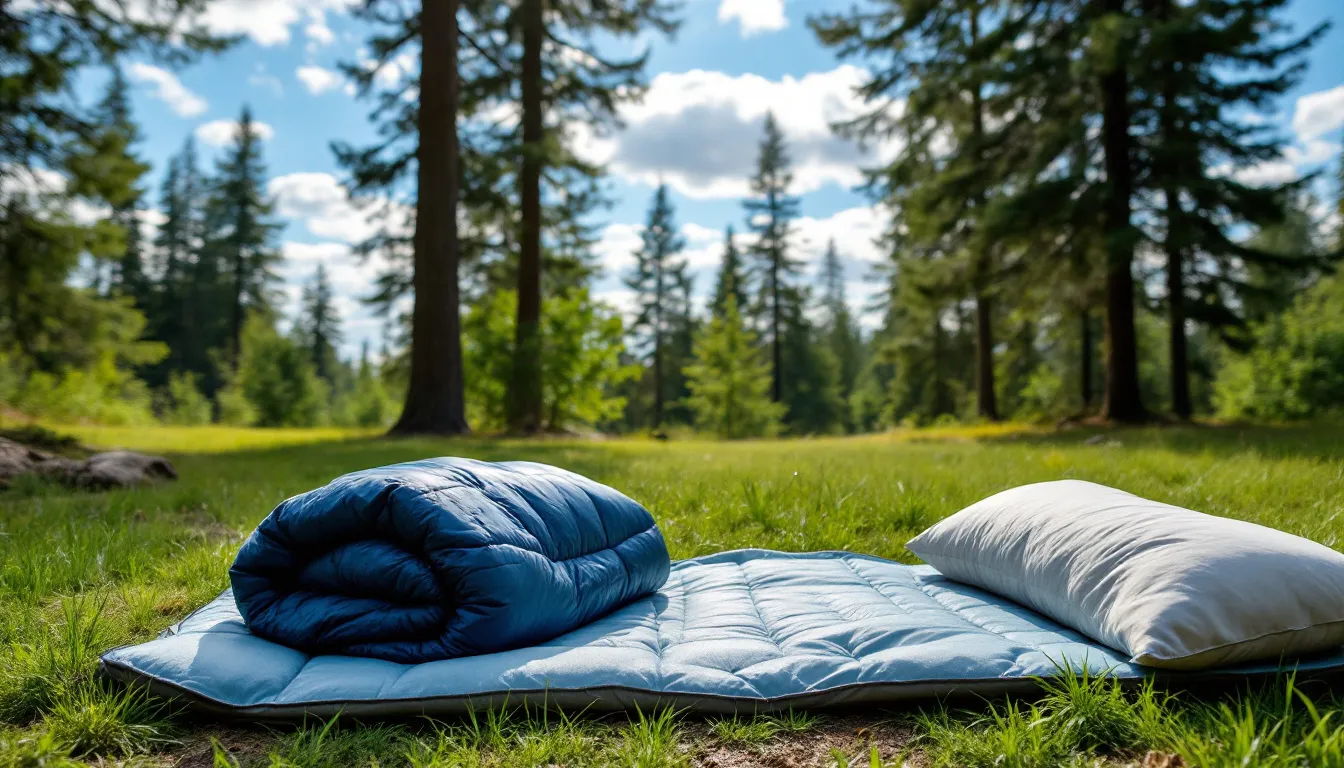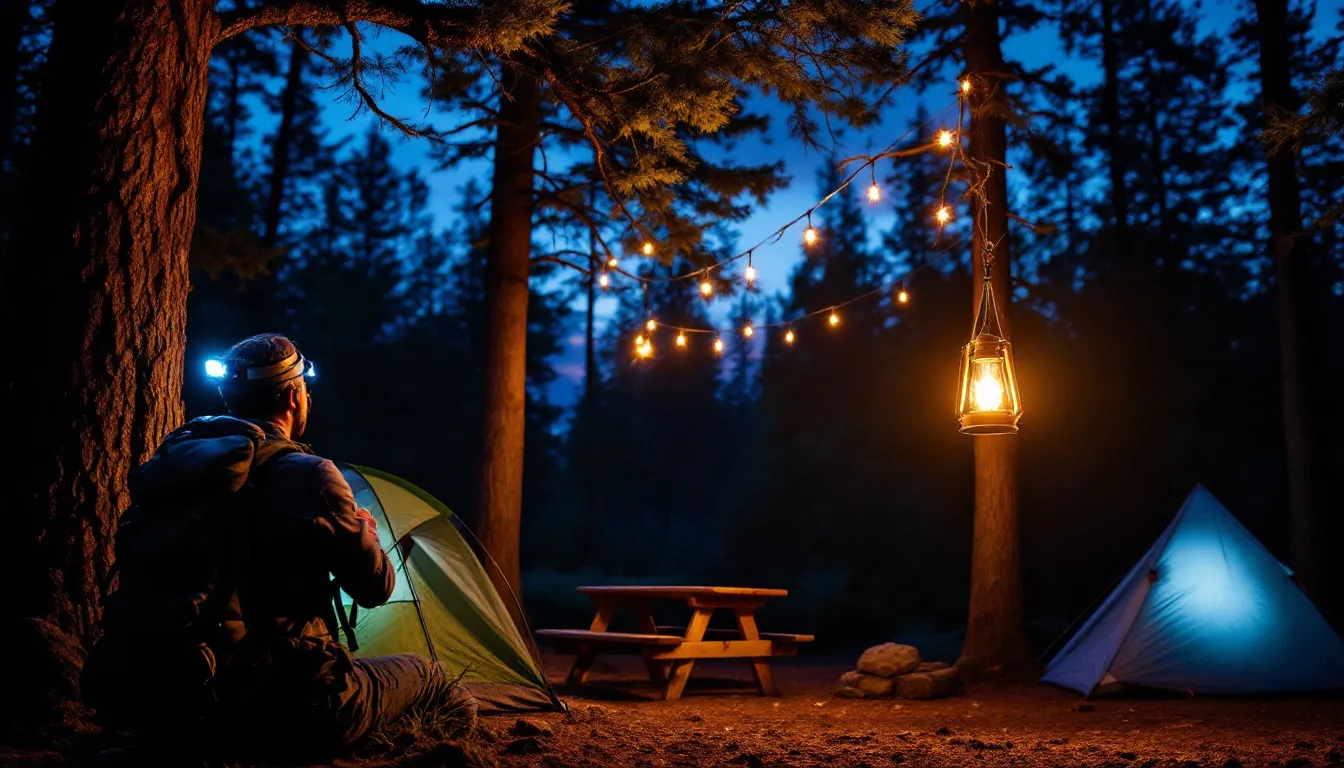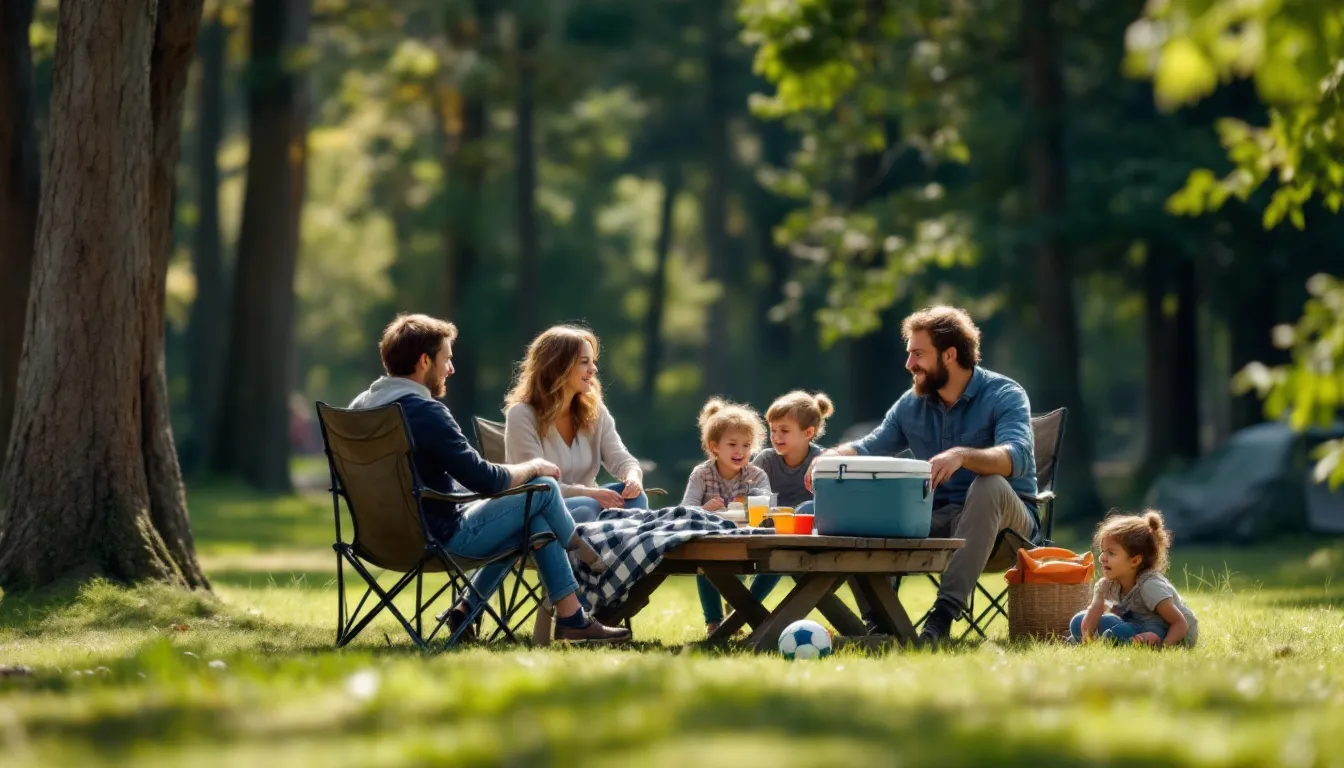According to the Outdoor Industry Association, 16.4 million Americans went on their first camping trip in 2024, with 73% citing “not knowing what gear to buy” as their primary concern. If you’re planning your first camping trip, you’re not alone in feeling overwhelmed by the endless gear options and conflicting advice.
The good news? You don’t need to spend thousands or master complex equipment to enjoy outdoor adventures. With the right gear selection focused on essentials, you can have a comfortable and successful first time camping experience. This comprehensive guide breaks down the best camping gear for beginners, from the Big Four essentials to budget-friendly tips that keep your initial investment low while ensuring you have everything needed for a good night’s rest under the stars.
Essential Camping Gear Every Beginner Needs
Before diving into specific products, understand that successful camping starts with four foundational items: a tent, sleeping bag, sleeping pad, and camp stove. These form the backbone of any camping setup and make all the difference between a memorable outdoor adventure and a miserable night outdoors.
For first time campers, budget $200-400 for a basic starter kit, or consider renting expensive items like tents from REI for $25-50 per trip to test before investing. This approach lets you discover your preferences without committing to gear that might not suit your camping style.
Focus on car camping gear initially rather than ultralight backpacking equipment. Car camping allows for heavier, more comfortable items since you’re not carrying everything on your back. This means you can prioritize comfort and ease of use over weight savings.
Practice setting up all gear at home before your first camping trip. This single tip prevents more campsite frustration than any other advice. Fumbling with tent poles in the dark or discovering missing parts at your campsite can ruin an otherwise perfect trip.
Choose multipurpose items whenever possible to minimize both weight and cost. A good multi tool can replace multiple specialized tools, while a camping pillow that doubles as a lumbar support serves two functions for beginning campers.

Shelter: Choosing Your First Camping Tent
Your camping tent serves as your home away from home, making it the most critical piece of camping gear. The right tent protects you from weather while providing a comfy place to sleep and store gear.
The Coleman Instant Cabin Tent (4-person, $89) sets up in 60 seconds and represents the perfect entry point for beginners. Pre-attached poles eliminate the guesswork, while the cabin design maximizes interior space. For those seeking better weather protection, the REI Co-op Base Camp 4 Tent ($249) offers excellent durability and easier setup than traditional dome camping tents.
Size up one person when selecting tent capacity. Buy a 3-person tent for 2 people to ensure adequate space for gear storage and comfort. Most camping tents are rated optimistically, and the extra room prevents feeling cramped during extended stays or bad weather.
Practice setup in your backyard 2-3 times before your camping trip. Time yourself and note any challenging steps. This preparation pays dividends when you arrive at your campsite tired after a day of travel.
Always use a footprint or tarp under your tent to protect the tent floor from rocks, sticks, and ground moisture. This simple step extends tent life significantly and prevents punctures that could ruin your trip.
Look for color-coded poles and clips for easier assembly, especially in low light conditions. Many modern camping tents feature intuitive design elements that make setup straightforward even for nervous beginners.
Sleep System: Staying Comfortable Through the Night
A quality sleep system ensures you wake up refreshed and ready for outdoor adventures. This system consists of three components: sleeping bag, sleeping pad, and pillow. Each plays a crucial role in maintaining body heat and comfort throughout the night.
Sleeping Bags for New Campers
Temperature rating is the most important factor when choosing sleeping bags. The Coleman Brazos Cold Weather Sleeping Bag (30°F rating, $35) works reliably for spring through fall camping trips. For better quality and features, the Kelty Catena 30 ($69) offers anti-snag zippers and a compression sack for easier packing.
Choose a temperature rating 10-15 degrees lower than expected nighttime temperatures. If you expect 40°F nights, select a 25°F rated bag. This buffer accounts for individual differences in cold tolerance and provides safety margin for unexpected temperature drops.
Rectangular sleeping bags provide more room for movement than mummy bags, making them ideal for comfortable beginner sleeping. While mummy bags offer better thermal efficiency, the extra space in rectangular bags often leads to better rest for those unaccustomed to confined sleeping.
Synthetic fill dries faster than down if it gets wet during camping trips. For beginners who may not yet have perfected their gear protection techniques, synthetic insulation offers forgiveness that down cannot match.
Sleeping Pads and Comfort
Never underestimate the importance of sleeping pads. The cold ground can steal body heat faster than air temperature, making a quality pad essential for a good night’s sleep.
The Klymit Static V Insulated pad ($50) provides an R-value of 4.4, offering excellent insulation from the cold ground. Its V-shaped chambers create comfortable sleeping while maintaining stability throughout the night.
For side sleepers or those prioritizing maximum comfort, the REI Co-op Camp Bed 3.5 ($79) offers 3.5 inches of cushioning. This thickness rivals many home mattresses and virtually guarantees comfortable rest.
Closed-cell foam pads like the Therm-a-Rest Z Lite Sol ($45) never puncture or deflate, making them bulletproof options for beginners concerned about gear failure. While less comfortable than inflatable options, they provide reliable insulation and can double as camp seating.
Always bring a camping pillow or inflatable pillow instead of bulky home pillows. Dedicated camp pillows pack smaller and often provide better neck support than improvised alternatives.
Test your sleep system at home to ensure proper fit and comfort. Spend a night on your living room floor using your camping setup to identify any issues before heading to the wilderness.
If you’re looking for something like a camping Cot, I’ve written an article on things to look for. Read my article here : The Complete Guide to Camping Cots : Everything you need to know.

Cooking Equipment: Essential Camp Kitchen Gear
Proper cooking gear transforms basic sustenance into enjoyable meal prep experiences that rival your home kitchen. The key is balancing functionality with simplicity for stress-free food preparation.
Camp Stoves and Fuel
A reliable camping stove forms the foundation of your camp kitchen. The Coleman Classic Propane Stove (2-burner, $49) provides consistent performance that beginners can trust. Its two-burner design allows simultaneous cooking, similar to home kitchen setups.
Bring extra propane canisters since each 16oz canister provides approximately 3-4 hours of cooking time. Calculate your needs based on planned meal prep complexity and group size. It’s better to have extra fuel than run out mid-trip.
Test stove ignition and flame control at home before your trip. Practice lighting the stove and adjusting flames to understand how your specific model behaves. This familiarity prevents struggles when hunger strikes at camp.
Pack a windscreen or plan to cook in sheltered areas for better flame control. Wind dramatically affects cooking efficiency and can make precise temperature control nearly impossible without protection.
Always bring backup fire-starting options like a reliable lighter or waterproof matches for stove lighting. Even the best camping stove won’t work if you can’t ignite it.
Cookware and Utensils
Start with basic cookware from home plus one good camp-specific pot with a tight-fitting lid. This hybrid approach saves money while ensuring you have appropriate tools for outdoor cooking gear needs.
Essential kitchen gear includes a cutting board, sharp knife, can opener, and cooking utensils from your home kitchen. Don’t overthink this – your existing tools work perfectly for camping applications.
Pack lightweight plates, bowls, and cups, avoiding glass items that can break and create safety hazards. Choose durable plastic or metal options that can withstand the rigors of outdoor use.
Include dish soap, scrub pad, and wash basin for cleaning after meals. Proper cleanup prevents attracting wildlife and maintains sanitary conditions throughout your camping trip.
Store cooking gear in a large plastic tub that doubles as a wash basin. This organizational system keeps everything contained while providing a dedicated space for dishwashing duties.
Lighting and Power: Staying Safe After Dark
Adequate lighting ensures safety and functionality once the sun sets. Quality lighting systems prevent accidents and allow continued camp activities after dark.
The Black Diamond Spot 400 headlamp ($40) provides hands-free lighting with a red night mode that preserves night vision. The adjustable beam and multiple brightness settings make it versatile for various camp tasks.
For campsite ambient lighting, the Coleman Battery Guard 200L lantern ($25) illuminates your entire area with an impressive 600-hour battery life. Its stable base and wide light distribution make it perfect for meal prep and evening activities.
Pack extra batteries (AA and AAA) in waterproof containers for all devices. Dead batteries in critical lighting equipment can create dangerous situations, especially in unfamiliar terrain.
A portable power bank like the Anker PowerCore 10000 keeps phones charged for emergencies and navigation. While camping offers a break from technology, maintaining communication capability is a crucial safety consideration.
Test all lighting equipment before your trip and replace any weak batteries. This simple check prevents discovering equipment failures when you need lights most.
Consider solar string lights for ambient campsite lighting without battery drain. These create a welcoming atmosphere while preserving precious battery power for essential devices.

Clothing and Weather Protection
Proper clothing systems keep you comfortable across changing weather conditions. The key is layering with appropriate materials rather than relying on single heavy items.
Avoid cotton clothing entirely, choosing synthetic or merino wool fabrics for superior moisture-wicking properties. Cotton retains moisture and loses insulation when wet, creating potentially dangerous situations in cold weather.
Pack three distinct layers: base layer for moisture management, insulating layer (fleece or puffy jacket) for warmth, and rain shell for weather protection. This system adapts to virtually any weather condition you might encounter.
Bring extra socks and underwear for each day plus one spare set. Dry feet and fresh undergarments significantly impact comfort and prevent health issues during extended camping trips.
Include warm hat, sun hat, gloves, and bandana for temperature and sun protection. These small items take minimal space but provide crucial protection against environmental extremes.
Pack rain jacket and pants even if the forecast shows clear weather. Mountain weather changes rapidly, and afternoon thunderstorms can develop with little warning in many camping areas.
Bring camp shoes like slip-ons or sandals for relaxing around camp and late-night trips to facilities. These give your hiking boots a break while providing protection around the campsite.
Tip: Keeping the mosquitos away might be your biggest challenge camping. Here’s a link to an article I wrote on 12 Tips on How to Keep Mosquitoes Away While Camping.
Safety and First Aid Essentials
Safety equipment and first aid supplies address emergencies and minor injuries that commonly occur during outdoor adventures. Proper preparation prevents minor issues from becoming major problems.
The Adventure Medical Kits Ultralight/Watertight .5 first aid kit ($25) covers basic injuries in a compact, waterproof package. This kit includes essentials like bandages, antiseptic, and pain relievers for common camping mishaps.
Include personal medications, insect repellent with DEET, and SPF 30+ sunscreen in your aid kit. These items address the most common health issues encountered during camping trips: insect bites, sunburn, and medication needs.
Pack a whistle for emergency signaling and learn proper distress signals. Three sharp blasts repeated at intervals is the universal distress signal recognized by rescue personnel.
A multi tool like the Leatherman Wave+ ($109) provides essential tools for gear repairs and utility tasks. Quality multi-tools include knife, pliers, scissors, and screwdrivers in one compact package.
Include duct tape wound around trekking poles or other gear for emergency repairs. Duct tape fixes torn tents, broken poles, and countless other camping gear failures.
Download offline maps to your phone and bring backup paper maps of your camping area. Technology fails, but proper navigation prevents getting lost and requiring rescue.
Comfort Items and Camp Furniture
Comfort items transform basic camping into enjoyable outdoor experiences. While not essential for survival, these additions significantly improve quality of life at camp.
The Coleman Oversized Quad Chair ($35) supports 325 pounds and includes cup holder and cooler pouch for convenience. Sturdy camp chairs provide comfortable seating around the campfire and during meals.
For weight-conscious campers, the REI Co-op Flexlite Chair ($149) weighs only 2 pounds while providing excellent comfort and support. This investment pays dividends for frequent campers who appreciate quality gear.
Bring a foldable camping table for food prep and games if your campsite lacks a picnic table. Most campsites include picnic tables, but having your own ensures adequate prep space regardless of campsite amenities.
Pack a camp pillow or inflatable pillow for better sleep comfort. Quality rest is crucial for enjoying outdoor adventures, and a good pillow makes a significant difference in sleep quality.
Consider a camping hammock for afternoon relaxation between trees. Hammocks provide comfortable resting spots and add an element of leisure to your camping experience.
Tip: If it’s your first time camping with family, and you want to make sure everything goes smooth. I have written an article on Essential Guide: First Time Camping with Kids. It would be a great idea to read through it so you’re better prepared!

Food Storage and Cooler Recommendations
Proper food storage keeps meals safe and prevents wildlife encounters. Quality coolers and storage systems are essential for multi-day camping trips.
The Coleman Xtreme 70-Quart Cooler ($89) keeps ice for 5 days in 90°F weather, providing reliable food storage for extended trips. Its large capacity accommodates food for families or groups.
Pre-chill your cooler with ice overnight before packing food for better ice retention. Starting with a cold cooler dramatically improves performance and extends ice life.
Pack frozen foods at the bottom, cold drinks on top, and consider using a separate cooler for beverages. This organization minimizes temperature fluctuations and extends ice life.
Bring bear-proof food containers if camping in bear country and check local requirements before your trip. Many national parks and wilderness areas mandate specific food storage methods.
Store food in hard-sided containers or your vehicle to prevent wildlife encounters. Proper food storage protects both campers and wildlife by preventing dangerous interactions.
Budget-Friendly Tips for New Campers
Smart shopping and gradual gear acquisition help beginner campers build quality kit without breaking the bank. Focus on essentials first, then add comfort items over time.
Start with basic gear totaling $300-500 for a complete setup versus $1000+ for premium equipment. This budget provides everything needed for successful camping trips while keeping your initial investment low.
Rent expensive items like tents and sleeping bags from REI for $25-50 per trip to test gear before purchasing. This approach lets you try different brands and styles to discover your preferences.
Buy used gear from REI Garage Sales, Facebook Marketplace, or local gear swaps. Quality outdoor gear retains value and often provides excellent performance even when previously owned.
Borrow items from experienced camping friends for your first few trips. This strategy provides access to quality gear while building relationships with knowledgeable outdoor enthusiasts.
Focus your budget on the Big Four items first (tent, sleeping bag, sleeping pad, camp stove), then gradually add comfort and convenience gear based on experience and preferences.
Check your local library for camping gear lending programs available in some communities. These programs provide access to expensive gear for minimal cost while supporting sustainable consumption practices.
Starting your outdoor adventures doesn’t require perfect gear or extensive experience. Focus on the essentials, practice at home, and remember that the best camping gear for beginners is equipment that gets you outside and enjoying nature. Your gear will evolve as your camping experience grows, but these foundations will serve you well on countless camping trips ahead.
Plan your first camping trip with confidence, knowing you have the right gear and knowledge to create lasting memories in the great outdoors. The campground is waiting, and your adventure begins with that first step outside your comfort zone.





